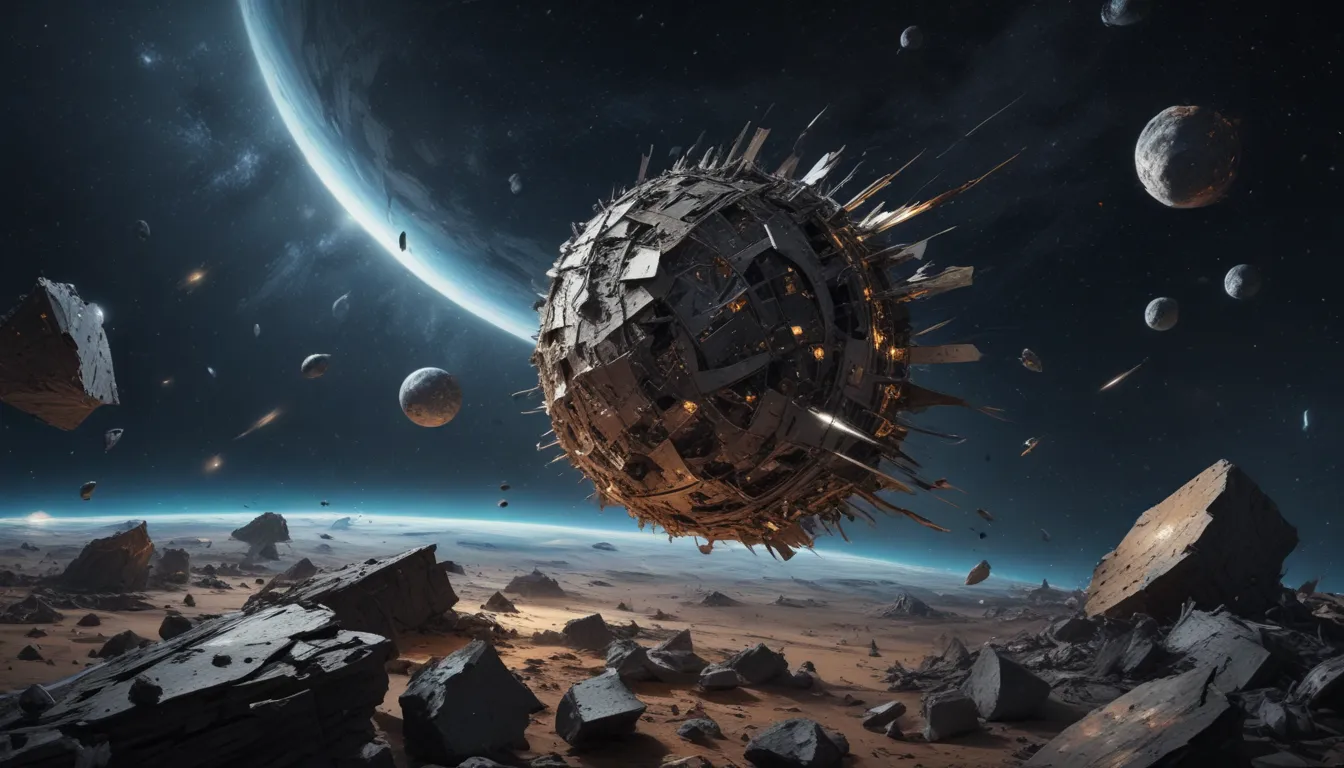The pictures we use in our articles might not show exactly what the words say. We choose these pictures to make you interested in reading more. The pictures work together with the words but don’t take their place. The words still tell you the important facts.
Welcome to the realm of space debris management, where astrophysics and space exploration intersect to tackle a crucial concern in outer space. As humanity ventures further into the cosmos, the issue of space debris, also known as space junk, looms large. What exactly is space debris, and why is it a growing threat to our presence in space? Join us on a journey through the vastness of space as we unravel 15 extraordinary facts about space debris management, showcasing innovative strategies and technologies designed to address this pressing problem.
Understanding Space Debris
Space debris, the remnants of satellites, rockets, and other man-made objects left floating in Earth’s orbit, poses a significant threat to operational spacecraft. These fragments, known as "space junk," can travel at incredibly high speeds, reaching velocities of up to 17,500 miles per hour, capable of causing severe damage upon impact.
Tracking and Monitoring Space Debris
Space agencies and organizations worldwide actively track and monitor space debris using ground-based radars and telescopes. By predicting the location and trajectory of debris, they can avoid potential collisions with operational satellites, mitigating the risk of damage and further contributing to the growing space debris problem.
Collisions and Consequences
Collisions between space debris and operational satellites can have dire consequences, resulting in damage or destruction of valuable assets. The impact of these collisions not only renders satellites inoperable but also adds to the growing debris population, creating a cascading effect of debris proliferation.
Mitigation Measures and Guidelines
In response to the escalating space debris issue, space agencies and satellite operators implement various mitigation measures, such as designing satellites with disposal mechanisms and deorbiting them at the end of their missions. International guidelines, like those established by the Inter-Agency Space Debris Coordination Committee (IADC), provide recommendations for responsible and sustainable space operations.
Innovative Technologies for Debris Removal
Proposals for active removal of space debris are underway, exploring concepts like harpoons, nets, and robotic arms to capture and remove debris from orbit. These innovative technologies aim to reduce the risk of collisions and ensure a safer space environment for future missions.
Reentry and the Kessler Syndrome
Space debris that cannot be removed from orbit eventually reenters Earth's atmosphere, mostly burning up upon reentry. However, larger fragments may survive and fall into uninhabited areas like oceans. The Kessler Syndrome, a hypothetical scenario proposed by NASA scientist Donald Kessler, warns of a chain reaction of collisions that could create a dense cloud of debris, rendering certain orbits unusable for satellites.
International Collaborations and Space Traffic Management
Effective space debris management requires international collaboration, with organizations like the United Nations Office for Outer Space Affairs (UNOOSA) and the International Telecommunication Union (ITU) working together to address the challenges posed by space debris. As space becomes more crowded with satellites, the need for efficient space traffic management systems becomes increasingly critical to regulate movement and minimize collision risks.
Future Technologies and Economic Impact
Researchers are exploring advanced technologies like lasers and ion beams to remove smaller debris from orbit, paving the way for cleaner space environments in the future. The economic impact of space debris cannot be overlooked, as disruptions to satellite-based services can lead to financial losses in sectors such as telecommunications, weather forecasting, and navigation systems.
Education, Awareness, and Space Treaties
Space agencies and organizations conduct educational programs and campaigns to raise awareness about the importance of space debris management. International space treaties, like the Outer Space Treaty, provide a legal framework to govern activities in outer space, promoting cooperation and responsible behavior among space-faring nations.
Conclusion: Towards Sustainable Space Exploration
Space debris management is a complex and urgent issue that demands global attention and collaboration. By implementing responsible practices, advancing technological solutions, and adhering to international regulations, we can minimize the risks posed by space debris and secure the future of space activities. Efficient space debris management is crucial for the sustainability and safety of space exploration, ensuring a cleaner and safer space environment for generations to come.
FAQs: Answering Common Questions
- What is space debris, and how does it pose a threat?
-
Space debris refers to defunct satellites, spent rocket stages, and collision fragments in Earth's orbit, threatening active spacecraft through potential collisions.
-
How is space debris monitored, and can it be removed?
-
Space agencies track and monitor debris using ground-based systems, with efforts underway to remove debris using robotic systems and passive mitigation measures during satellite design.
-
Are there regulations for space debris management, and what are the potential consequences of uncontrolled debris proliferation?
- International regulations govern space debris management to promote responsible practices, with uncontrolled debris proliferation posing risks like the Kessler Syndrome, a chain reaction of collisions that could hinder future space exploration.
As we delve into the captivating world of space debris management, let us embrace the challenges and opportunities that lie ahead in our exploration of the cosmos. By fostering a culture of responsibility, innovation, and collaboration, we can pave the way for a sustainable and thriving future in space.






